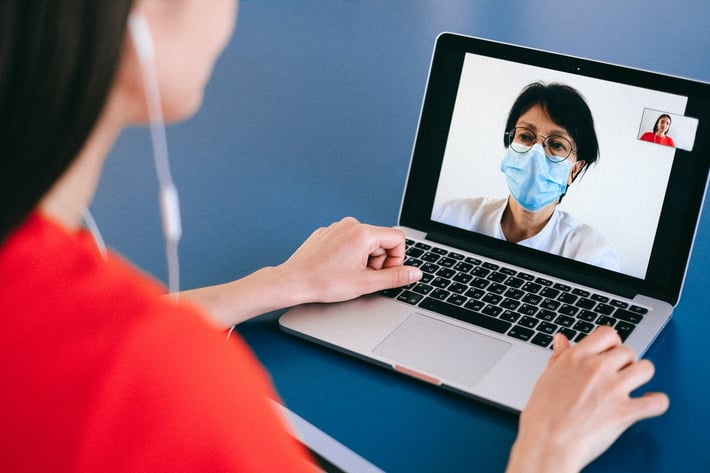The impact of digitalisation on the patient-doctor relationship

The COVID-19 pandemic reshaped remote work for many professions and together we have discovered its benefits and limitations. Much industry has prioritised the convenience and flexibility that digitalisation permits, disallowing face-to-face informal conversations where relationships are built, and ideas exchanged.
For the Patient – Doctor consultation, informal conversation is where relationships are built, allowing medical practitioners to build trust and continuity of care over time. It provides vital clues to the wellbeing of our patients: observation allows the clinician to garnish a myriad of information. What is their posture? What is their dressing? Can they arise from a seated position unaided? Can they walk freely without evidence of pain? Even beyond the mask, eye contact can open up a picture of well-being or not.
This personal interaction allows us to build a wider picture for the care of our patients, complementing a clinical history and examination, and guiding us to optimal care. Decades of international evidence-based medicine supports the pre-eminent importance of face-to-face medicine and continuity of care.
CPME’s recent policy on telemedicine, the practice of medicine over a distance, underlines that face-to-face consultations should remain the gold standard. However, just as the pandemic has accelerated remote work, telemedicine has become increasingly embedded into medical practice. So how do doctors, patients and policymakers reap its benefits whilst mitigating its risks and challenges?
Telemedicine can be a useful additional tool in a number of clinical scenarios, for example, in emergency care where treatment is time sensitive, and the patient cannot access a specialist within a safe time period.
Telemonitoring may be suitable for patients with chronic or long-term conditions and remote follow up where the patient is known to the physician and their condition is stable. Additionally, telemedicine has the potential to provide rapid access to medical care in rural areas.
The UK regulator, the Care Quality Commission (CQC), identified that quality of care and safety of patients as great concerns and paramount when considering new digital innovations. Access to telemedicine services is not always equitable and may in fact increase the digital divide. There are concerns that the Tudor Hart inverse care law may be exacerbated in marginalised populations.
Privacy and patient confidentiality concerns arise as more patient data is exposed in online platforms and apps. This underlines the need for secure and stable platforms, where patient data is encrypted.
The European principles for ethics in digital health, adopted earlier this year, underline that digital health can complement face-to-face healthcare, and that individuals must be informed about the benefits and limits. Indeed, recognising the limitations of a digital consultation, the French Presidency of the Council of the European Union has mandated that when a patient is offered a telemedicine consultation, a face-to-face in person consultation has to be offered contemporaneously.
In Ireland, where the majority of the population are registered with a GP, we have one of the best COVID vaccination rates in the world with low vaccine hesitancy. The personal relationship with patients and willingness to address concerns with a trusted source, their General Practitioner, has undoubtedly been vital in this endeavour.
Just as we have discovered with remote work, online interactions have their drawbacks and patient safety is too important to be sacrificed for immediacy and convenience. Patients deserve the best service possible, and the best model of care remains to have an appropriately resourced service accessible locally, ensuring continuity of care and a trusted long-term relationship with their Family Physician/General Practitioner.